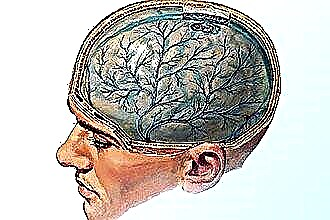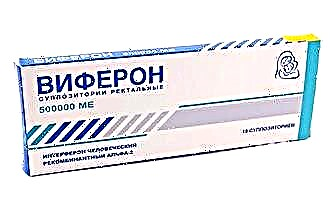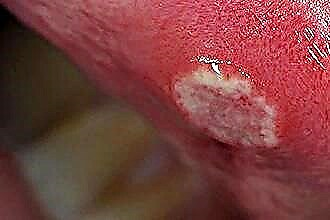Sinusitis is one of the most common pathologies in the practice of an otolaryngologist; it occurs in both children and adults. This is the collective name for several diseases, the essence of the pathogenesis of which is the occurrence of an inflammatory process in the paranasal sinuses, or paranasal sinuses. All sinuses can be affected at the same time (then they talk about pansinusitis) or the inflammation is localized only in a certain sinus (isolated sinusitis). Pathological changes of an inflammatory nature in the frontal sinus are called frontal sinusitis. Puncture of the frontal sinus is one of the methods used in the treatment of various variants of this disease.
The essence of the procedure and preparation
 The frontal sinuses are paired paranasal sinuses that are located in the frontal bone and communicate with the nasal cavity. Inflammation of the mucous membrane of the frontal sinus is called frontal sinusitis. The disease can be acute or chronic, significantly reducing the patient's quality of life. Methods such as puncture and trepanopuncture of the frontal sinus are widely used in treatment regimens for various forms of frontal sinusitis. What is it and how is it carried out?
The frontal sinuses are paired paranasal sinuses that are located in the frontal bone and communicate with the nasal cavity. Inflammation of the mucous membrane of the frontal sinus is called frontal sinusitis. The disease can be acute or chronic, significantly reducing the patient's quality of life. Methods such as puncture and trepanopuncture of the frontal sinus are widely used in treatment regimens for various forms of frontal sinusitis. What is it and how is it carried out?
Puncture of the frontal sinus is a type of surgical intervention, the principle of which is to violate the integrity of the frontal bone wall in order to penetrate into the lower anatomical regions. What is the difference between puncture of the frontal sinus and trepanopuncture? The purpose of the appointment and the technique for performing these procedures are similar, however, in the first case, an area is selected where the bone is of a small thickness - this allows you to create a hole in it using a thin needle. With trepanopuncture, it is necessary to use a special device with which the bone is drilled after a small incision of the skin.
Puncture and trepanopuncture are diagnostic and treatment procedures.
Why is a puncture and trepanopuncture procedure performed? The indication for the appointment is serous or purulent frontal sinusitis with an uncomplicated course, which does not lend itself to conservative methods of therapy. Through puncture, you can remove the secretion accumulated in the cavity and rinse with medicinal solutions, establish drainage. If necessary, a contrast agent is injected through a puncture needle to perform an X-ray examination. The contents of the cavity obtained during rinsing can be examined in the laboratory in order to find the most effective antibacterial drugs.
The duration of drainage, that is, the removal of pathological masses through the puncture hole, is determined by the doctor based on the severity of the course, the types of pathogenic microflora and a number of other factors. One of the ways to find out the state of the frontal sinus is to assess the content of pathological discharge in the lavage fluid. On average, drainage in the sinus lasts from 2 to 8 days.
There are different techniques for performing puncture and trepanopuncture, but the main ones are:
- method Antonyuk;
- Ustyanov's method.
To reduce the risk of complications and increase the effectiveness of the procedure, preparatory measures are necessary:
- Visualization of the frontal sinus and adjacent structures.
Before starting treatment, the doctor needs to get an idea of the size and shape of the frontal sinuses, to determine if there are structural features that may be of importance for the procedure, to designate landmarks for the planned puncture. For this, an X-ray of the paranasal sinuses is performed in several projections, and if additional information is required, computed tomography (CT) is performed.
- Endoscopy.
Endoscopic examination of the nasal cavity is performed using special devices - endoscopes. The method allows you to obtain additional information about the state of the nasal mucosa, the presence of anatomical features of any intranasal structures. With the help of endoscopy, it is possible to find out if there are disorders in the nasal cavity, which should be considered as predisposing to the development of pathology of the frontal sinuses.
- Toilet of the nasal cavity.
It is required to clear the nasal cavity from secretions so that during the washing of the sinus it is clear whether the pathological discharge has actually accumulated in its cavity. After the toilet procedure is performed, anemization is also carried out - application of drugs to the mucous membrane that provoke vasospasm and help eliminate edema.
Before the operation, the attending physician tells the patient about the purpose and characteristics of the procedure, assesses the degree of risk and explains what complications may be associated with. Be sure to find out the presence of contraindications, intolerance to any drugs.
Antonyuk's method
According to the Antonyuk method, trepanopuncture of the frontal sinus is performed. The operation includes the following steps:
- laying the patient in a supine position;
- applying landmarks to the skin;
- treatment of the area of intervention with an antiseptic;
- conducting local anesthesia;
- making a skin incision;
- drilling a bone with a trepanopuncture device;
- introduction of a metal conductor and a hollow tube (cannula) into the resulting hole;
- insertion of a special needle with a blunt end into the cannula;
- aspiration (removal by suction) of the contents of the frontal sinus;
- washing the frontal sinus cavity.
During the operation, local infiltration anesthesia is used.
This is a method of anesthesia, the essence of which is the injection of an anesthetic drug (Novocaine, Lidocaine, Ultracaine, etc.).
Labeling is necessary to prevent injury (in particular, the posterior wall of the frontal sinus) during trepanopuncture. The choice of the point of intervention is carried out individually, while the doctor relies on the picture of radiographs and CT. For rinsing, saline (0.9% sodium chloride solution) or other drugs selected by the attending physician can be used. The cannula, installed during the operation, is fixed to the skin of the forehead with an adhesive plaster.
Ustyanov's method
 Puncture of the frontal sinus according to the Ustyanov method is performed using a hollow needle with a diameter of up to 1 mm and equipped with a mandrel (a special rod located in the lumen of the needle). The sequence of manipulations is observed:
Puncture of the frontal sinus according to the Ustyanov method is performed using a hollow needle with a diameter of up to 1 mm and equipped with a mandrel (a special rod located in the lumen of the needle). The sequence of manipulations is observed:
- Selection of the puncture site.
- Conducting local anesthesia.
- Creates a hole in the bone with a needle.
The puncture is performed through the inferior wall of the frontal sinus.
After inserting the needle, you can flush the sinus using medication.
Contraindications, complications
Although puncture and trepanopuncture with frontalitis are not the most difficult procedures that can be performed in the frontal sinus area, there are a number of contraindications:
- traumatic genesis of frontal sinusitis (development of the disease after the patient is injured);
- surgical interventions (indicating to patients the presence of operations on the frontal sinus);
- anatomical features (in particular, underdevelopment of the sinuses);
- severe course of some pathologies (diabetes mellitus, hypertension).
Contraindications may be infectious diseases in the acute period, various variants of the course of tuberculosis.
What are the risks of trepanopuncture of the frontal sinus? The consequences can be different. Among the complications of the procedure are:
- Developing in the course of manipulation.
- Delayed.
Complications belonging to the first of these groups are of a different nature and arise directly during the period of surgical intervention. These include:
- loss of consciousness, collapse;
- anaphylactic reaction;

- damage to blood vessels;
- damage to the posterior wall of the sinus.
An anaphylactic reaction is most often triggered by the administration of an anesthetic.
Anaphylactic reaction is a variant of an allergic reaction. Its development is not always predictable. However, the patient may be aware of the presence of hypersensitivity to certain drugs if episodes of allergies have been observed in the past. This should be reported to the doctor prior to starting the procedure.
Delayed complications arise after the completion of the procedure - within a few hours, days or even weeks. This is reactive edema, inflammation of the periosteum and bone tissue (periostitis, osteomyelitis). In some cases, there is a risk of developing purulent meningitis and meningoencephalitis.




